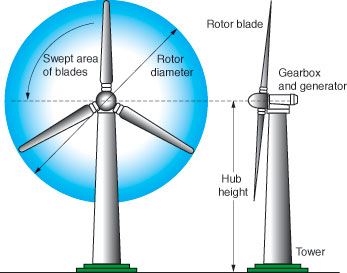Wind power use in the U.S.—and worldwide—is expanding rapidly. In 2008, more than 40 percent of our nation’s newly installed electricity-producing plants involved wind power. Currently, wind energy plants produce enough electricity on a typical day to power nearly 7 million American homes. The Department of Energy (DOE), which is supporting research at Lawrence Livermore and other facilities to improve the performance and efficiency of wind turbines, calculates that wind power could provide 20 percent of U.S. electricity needs by 2030, up from about just 1 percent in 2009.
To help DOE meet this ambitious goal, Livermore researchers are working to achieve a better understanding of how wind speed variability—in particular with relation to height—and atmospheric turbulence can affect power production. The researchers are also building advanced numerical models to aid in designing wind turbines, siting wind farms, and integrating wind power into the electrical grid. The Livermore effort is supported by DOE’s Energy Efficiency and Renewable Energy Program, the Laboratory Directed Research and Development (LDRD) Program, and a cooperative research and development agreement (CRADA) with Siemens Energy, Inc.
Wind power offers significant advantages over other energy technologies. For example, wind farms can be developed and linked to the electrical grid more rapidly and cheaply than other energy technologies. Also, wind power generates almost no carbon emissions. However, according to Livermore’s Jeff Mirocha, significant expansion of wind power production cannot be met by installing a massive number of new wind turbines alone. A host of technological and scientific challenges that must also be overcome involve extracting power from the wind and integrating it into the electrical grid. “At the core of these challenges is improved understanding and prediction of winds across a broad range of spatial and temporal scales,” Mirocha says.
For more information, contact This e-mail address is being protected from spambots. You need JavaScript enabled to view it at Lawrence Livermore National Laboratory.


